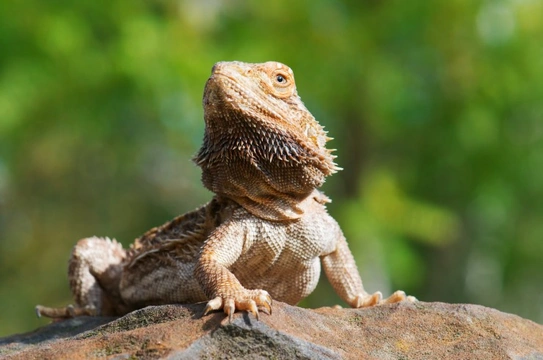
Impaction in bearded dragons
Bearded dragons are one of the most popular pet reptiles in the UK, as they are impressive to look at and generally considered suitable as a good pet even for the well-informed first time keeper. They tend to be hardy and healthy, and are not as sensitive to changes in temperature and conditions as many other large lizards, and so are often very forgiving of the odd rookie mistake.
However, in order to keep a bearded dragon happy and healthy, it is important to take care of them properly and ensure that you provide for all of their needs, as well as knowing how to identify some of the most common health problems that can afflict this species, and what to do about them.
One of the main problems that can affect bearded dragons whose care requirements are not quite ideal is impaction, and in this article, we will explain what bearded dragon impaction is, how it occurs, and what can be done about it. Read on to learn more.
What is impaction?
Impaction occurs when a substance builds up within the dragon’s digestive system to the point that it becomes hard and solid, both blocking food from passing through the digestive channel and being unable to move through the pet’s system naturally itself.
Impaction involves eating indigestible materials, such as the substrate of the tank, or too many mealworms or other foodstuffs that have a hard outer casing and are too large to pass through the digestive system with ease.
Impaction is different from constipation in reptiles, as constipation involves a hard build-up of food and faecal matter itself.
What leads to impaction in bearded dragons?
The most common cause of impaction in the bearded dragon is eating of the substrate of the tank, which can occur if certain common but unsuitable materials are used as the tank’s flooring. However, impaction may also occur if you feed your pet too many hard-shelled foods such as crickets or mealworms that are too large for them.
A good rule of thumb to follow is never to feed your pet anything larger than the distance between their eyes.
Some of the most common types of substrate that may lead to your pet eating them and so, becoming impacted include all forms of sand, including sand that is designed for reptile substrates-sand of all types are unsuitable for bearded dragons, which often takes novice keepers by surprise. Walnut or other shell substrate, soil, earth and turf, and also wood products like sawdust, bark and wood shavings can also lead to problems.
The most suitable substrates to use with a bearded dragon are things like reptile carpet, stone or slate tiling or even newspaper, as these forms of substrate will not be ingested by your pet, and are still suitable for use with heat pads and heat rocks to maintain the appropriate temperature.
How can you tell if your pet is impacted?
If your bearded dragon is suffering from impaction, there are a few signs and symptoms to look out for. A large blockage of the digestive system will generally lead to a loss of appetite and general lethargy, and sluggish behaviour. They will be reluctant to move around, reject food, and will generally be very uncomfortable around the stomach region.
They will likely be unable to pass faeces, and so keep an eye on your pet to make sure that they are pooping normally, as a blockage may first become evident when stool production ends. If your dragon is impacted, they will also tend to lose weight quickly and have a generally dull, unhealthy appearance, and may appear to walk stiffly or awkwardly when they move around.
If they do eat, they may regurgitate their food shortly afterwards, and in cases of severe impactions, they may display lumps or protrusions in between their spines, and have a noticeable bulge in the area of the impaction itself.
What can be done about it?
Impaction in the bearded dragon is highly unlikely to go away on its own, and can ultimately prove fatal. If you know or suspect that your dragon is impacted, there are a couple of things that you can try at home to help your pet to clear it, but if this proves ineffective, your pet will need to see a vet straight away.
The best way to try to clear an impaction at home involves using a natural, reptile-safe laxative such as pure, unsweetened pureed prunes, fed to your pet through a small syringe. Generally, using the syringe to dab the pureed prunes onto your pet’s nose will encourage them to lick it off.
Then, place your pet in a warm bath up to their shoulders, and keep them in it for up to half an hour, keeping the water temperature constant for the duration. Gently stroking your pet’s flanks from the chest downwards may help to move things along, but do not apply pressure or massage this area.
If this proves ineffective, you should take your dragon to the vet ASAP, as there is nothing else you will be able to do for them at home. Severe straining to pass faeces or manipulating the abdomen to encourage the blockage to move can lead to rectal prolapse in your pet, which is an emergency situation that can also prove fatal, so if your pet is severely impacted or a warm bath and laxative do not help, they need to see a vet right away.



